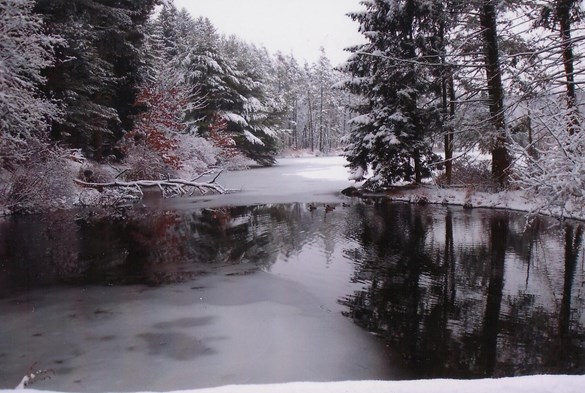
RWA Warns Of Thin Ice On Frozen Reservoirs
Feb 04, 2019As the freeze from the recent polar vortex gives way to warmer temperatures, the Regional Water Authority (RWA) is warning the public to never walk, skate or sled on ice-covered reservoirs, and to always observe warning signs posted on watershed land. Entering the water and doing any kind of activity on ice is not permitted on the RWA’s reservoirs, which are the sources of water for nearly 430,000 consumers in the Greater New Haven region.
“Several RWA reservoirs are either frozen or partially frozen over,” said RWA Police Captain, Paul Ruggiero. "Ice can be deceiving because it freezes and thaws at different rates, and ice thickness can vary depending on currents and depth. It is impossible to tell how thick the ice really is on some of our reservoirs, but with temperatures rising, any ice that is there is likely now to be breaking up.”
Ruggiero explained that frozen reservoirs can be far more dangerous than a frozen lake. “Reservoirs are essentially flooded river valleys with fluctuating water levels, and when people stand close to the shore, they are standing above iced-over water that can be up to 30 feet deep,” he said.
Follow these safety tips when near frozen bodies of water:
- Obey all posted signs at RWA recreation areas and on watershed property.
- Don’t test the thickness of the ice; it’s easy to slip from the bank and fall through.
- Beware of ice covered with snow. Snow can insulate ice and keep it from freezing. It can also mask unsafe conditions like hidden cracks and other weak spots.
- Parents should always closely watch and supervise their children, and explain the dangers of playing on frozen reservoirs and lakes.
The winter months offer many unique opportunities for RWA Recreation Permit holders at nine areas in south central Connecticut. All have different features to explore by walking, hiking, cross-country skiing and snowshoeing while taking in the sights at these scenic properties from which the region’s high-quality drinking water is sourced.
“We want our recreation permit holders to enjoy our watershed lands, but it’s important that people keep safety in mind,” said Ruggiero. “Any ice on reservoirs is unstable and dangerous. Falling through thin ice can very quickly become a tragedy, which is why we all must be diligent during this time of year.”





